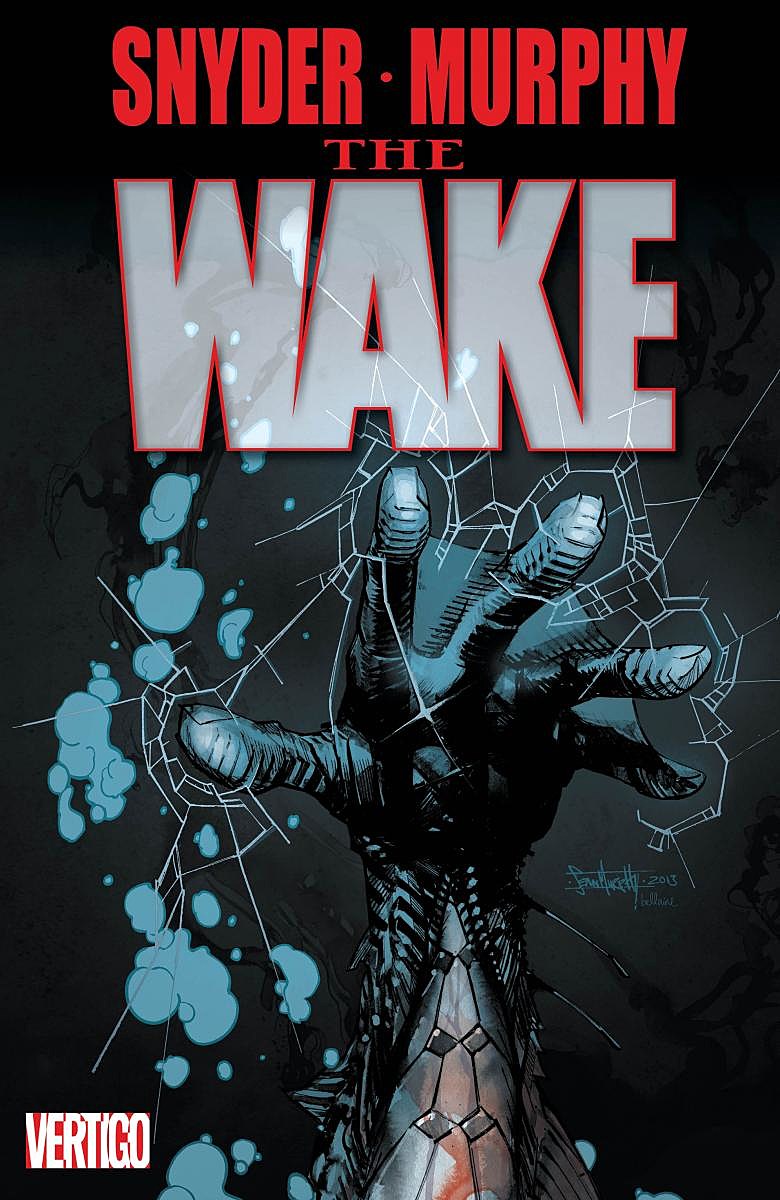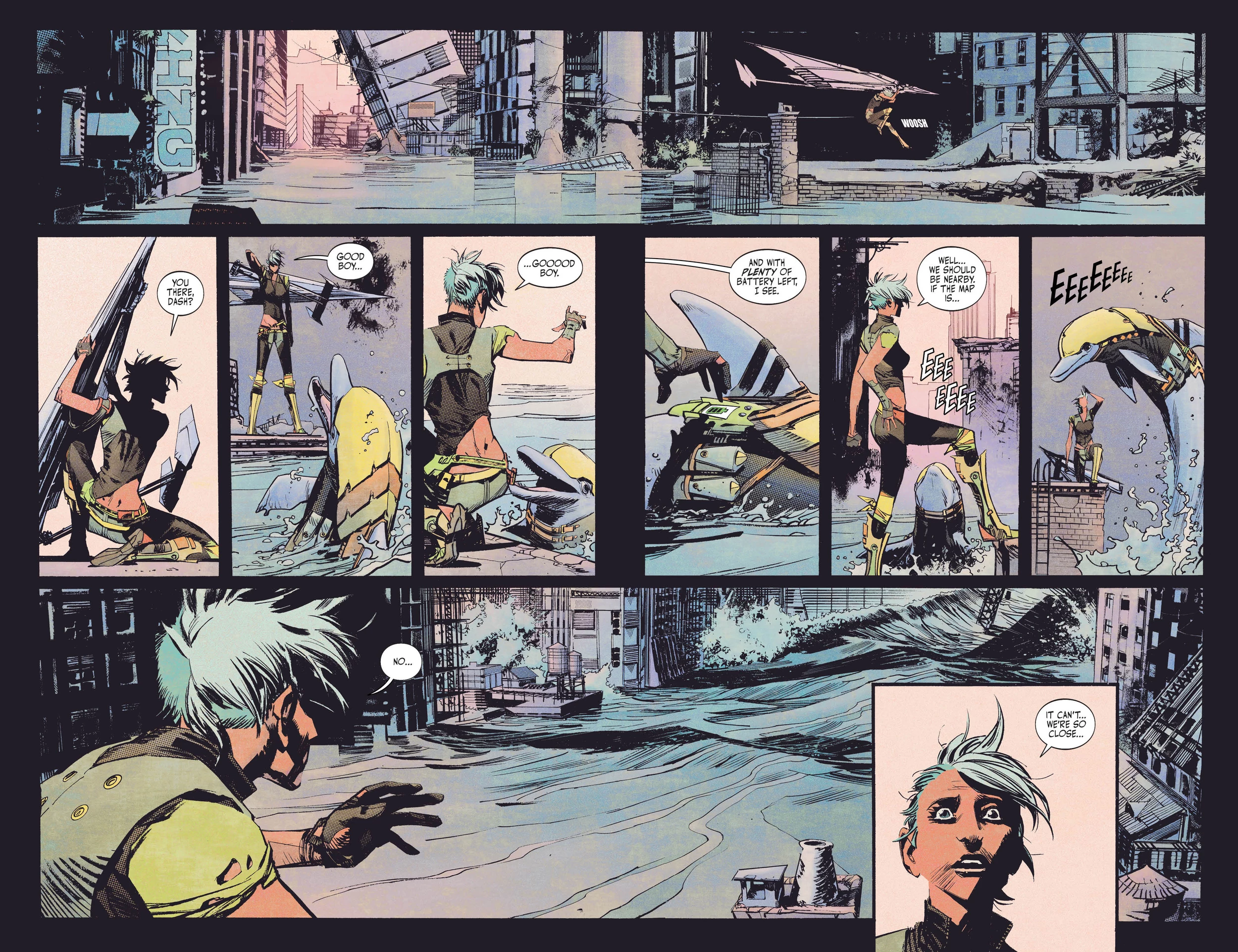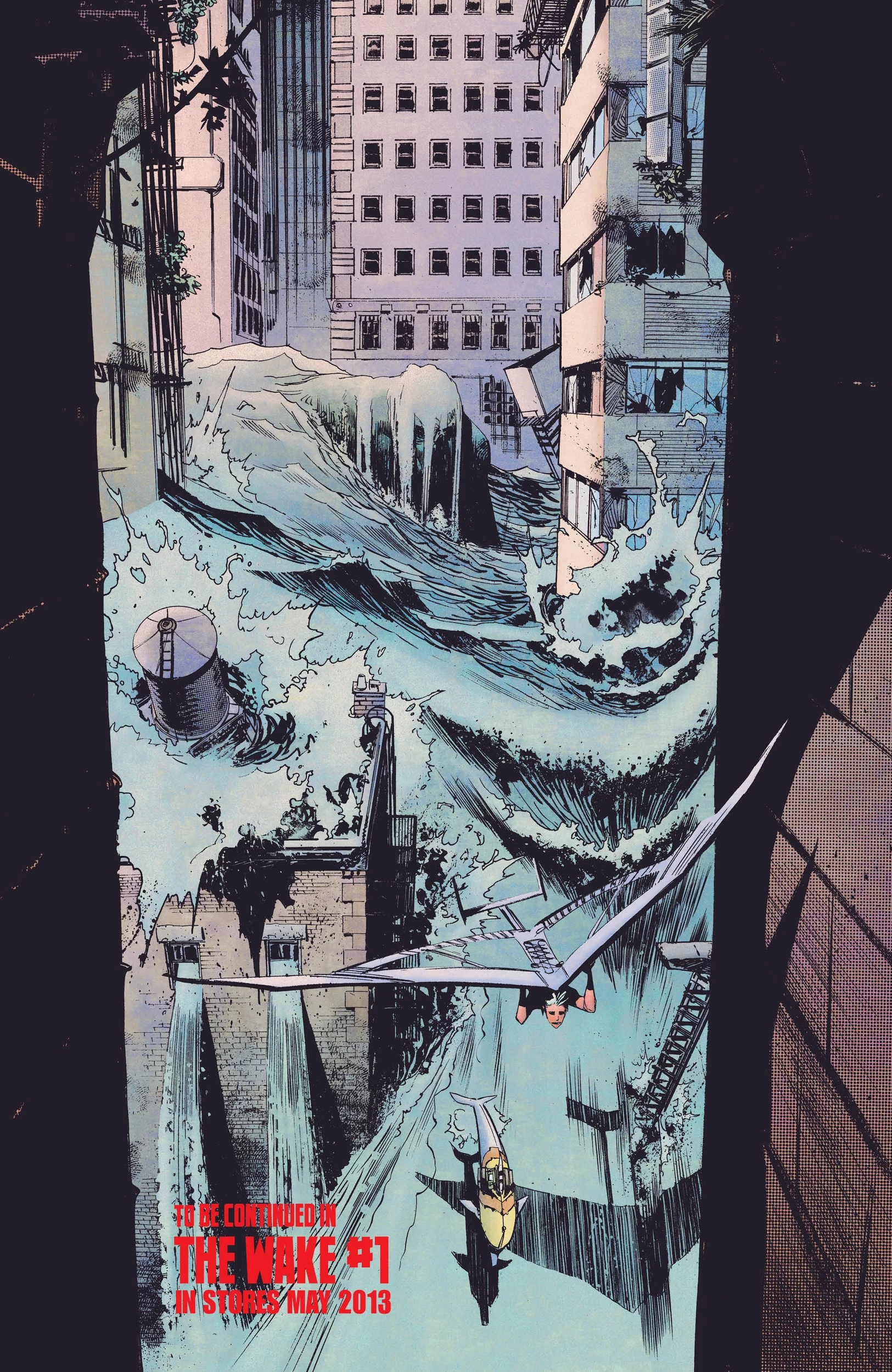![Snyder And Murphy On ‘The Wake': A Vast But Claustrophobic Sci-Fi & Horror Adventure [Interview]](http://townsquare.media/site/622/files/2013/04/thewakelogo.jpg?w=980&q=75)
Snyder And Murphy On ‘The Wake': A Vast But Claustrophobic Sci-Fi & Horror Adventure [Interview]

Next month, writer Scott Snyder and artist Sean Murphy team up for the new Vertigo mini-series The Wake. Early promo materials are short on details, but they say this much: The series is a "thrilling new underwater horror adventure" in which the U.S. Department of Homeland Security calls marine biologist Lee Archer to the arctic to investigate something wonderous, yet terrifying.
ComicsAlliance nabbed a few minutes on the phone with Snyder and Murphy to talk about how the book mixes genres, how it can be both claustrophobic and wide in its scope, and how the book is a sort of exploration of what might happen after the end of movies like John Carpenter's The Thing.
ComicsAlliance: The description of this comic I've seen in preview stuff is that it's a "thrilling, underwater horror adventure." Can you explain what that means a little bit?
Scott Snyder: Unpacking that, I guess the story is a really fun one for us, because it blends a lot of genres together. It has elements from things that I think both of us love, a number of different types of stories. It is at once kind of a horror story, it's sci-fi and it's kind of an adventure.
What it's about, to translate that into the story itself, is this big discovery that's made at the bottom of the ocean. This specimen is found that ends up kind of unlocking the key to tons of myths of the sea and folklore that has to do with the oceans and stuff. It's about this marine biologist, Lee Archer, who's called down to investigate, and as she does, she realizes more and more that some of the discoveries she's making when it comes to this creature are really terrifying, concerning both what's going to happen and what's happened in the past, to us, as people.
It's got a lot of claustrophobic, underwater terror and it's got some big, expansive sci-fi as well. It really is a big, odd, fun, strange story for both of us. One of the reasons we both gravitated to it is that it's something where we can flex our muscles creatively and try to do something a little different from what you've seen from us before.
CA: Sean, most of your work up to now has been set on dry land. I know underwater stuff can be challenging. It's a whole different world down there. How did you prepare yourself for this setting?
Sean Murphy: One of the things that was challenging about this issue was trying to draw the water well, draw it differently, try to make it into an actual character. I sort of had to re-approach the whole thing. Once they get underwater, it's no big deal. You're basically just drawing people flying, which comics does a lot. You put a few fish in the background.
A lot of the colors congeal it, by what [colorist] Matt [Hollingsworth] is doing. As soon as the blues go do down, and he does his thing, it definitely works a lot better. If the book wasn't being colored, I'd probably handle it a little bit differently. Knowing that he's got my back makes it a bit easier.

CA: You guys previously worked together on the American Vampire: Survival of the Fittest miniseries. American Vampire in general has horror characters, but it's really a book about mythology and American History. It's wide and expansive. Scott, you said parts of this were claustrophobic. It seems pretty different in that way.
SS: There are different parts of the book. There are really sort of two worlds to it. One of those worlds is set at the bottom of the ocean in a way that really is claustrophobic and terrifying because of how magnified all the problems are when you're down there, how hostile the environment is.
But there's another part of the book that you'll see, basically from page one, that imagines a much transformed, terrifying and wondrous kind of world that explains why it's expansive and big and epic and all those things. It's almost like the first half of the book introduces you to this key that unlocks all these terrifying and strange things that wind up opening the world in such a way that the second half of the book is entirely open and odd and unlimited in terms of its storytelling potential.
As vague as that sounds, without spoiling anything, part of it is, you can see from the first four pages, it's a story that envisions a world that is transformed by the way that the ocean shifts. You get to see this destroyed and new and reborn place, with new cultures and characters you've never seen before. It is this kind of open-ended and expansive science fiction story in addition to being this claustrophobic and horrific tale that takes up most of the first half.
CA: From what I've heard, this comic has been in the works for a while. Is that right?
SS: Yeah. I told Sean the idea, probably like two years ago, right, Sean?
SM: Yeah. It's been waiting for a while.
SS: It was just when we could get free, both of us, to do it. We showed it to Vertigo, I guess, over a year ago. They were excited about it. Then it just became when we'd have time to do it together, because Sean was working on Punk Rock Jesus and I was working on American Vampire, and Swamp Thing, and Batman and stuff. So it became when things would open up for us. Now is just the time when we had the moment where we said, "Oh, we can do this. Let's do it."
CA: How was the jump from Punk Rock Jesus to this book, Sean? Again, we're talking about a very different tone, a very different style of storytelling.
SM: It wasn't too bad. Punk Rock was working at 130 percent for eight months or whatever. I was lucky to have a good break of a few months between books. Once I started working, I had to sort of remind myself how to not over-detail, how to work with a colorist again. A lot of it was easier, because I didn't have to think so much about story anymore. I didn't have to worry about that stuff. I could just let Scott do that stuff for me. That was definitely easier.
But taking three months off, for any artist, you've sort of got to rediscover yourself again. For the first few pages, I would look at Punk Rock stuff that had been released and I would think, How did I do that? What was the tool I used, technique, whatever. After five or 10 pages, I finally felt like I was back to cruise control.
It was probably a little easier drawing this book because I could rely on the colorist, and Scott's good about not overcrowding the pages. Most pages are four, five panels large, whereas with Punk Rock, there was so much crowding going on. I had six, seven or eight. So I like that this book is allowing me to breathe more, where Punk Rock was a lot more congested.
CA: I want to ask you guys about influences. Looking at promo images with the logo and stuff, the two things that jump to mind are, any time you talk about underwater horror, you have to talk about Jaws, and I'm also reminded a little bit of The Thing. Were those influences?
SS: Those are two of my favorite movies. I've seen John Carpenter's The Thing at least 15 times. Three nights ago, it was on TV, so I went to go see it and it was the remake. I was so disappointed.
CA: Oh no!
SS: I know. I was totally upset.
I think there are a lot of things in the DNA of this story, from Jaws to The Thing to The Abyss. A lot stuff I love. I think the common denominator between those is they posit the ocean and the arctic, these mysterious landscapes like that, that we don't know, as places that are incredibly frightening, for both their sense of isolation, that once you're there, there's no getting away from it, and also of wonder. The discoveries that you make there are earth-shatteringly big, but also can be deadly.
Those elements of those two things are definitely in this. At the same time, we're trying to do something that's really different in terms of giving you a glimpse of the world past what happens at the ends of those kinds of movies. Almost like, what if something like The Thing happened? Where do you go next? I love the ending of The Thing. It's one of my favorite endings in all of film, where they're sitting there together, and you know it's all going down bad.
This story, we wanted to try something where – because both of us have done stories that have that conventional structure, too, where there's a beginning, middle and end, and you're finished, and you walk away from it – we give you almost a second part, where you're like, whoa, what am I looking at? This is entirely different from what I saw in the beginning. We wanted to do it just to have fun and give you the best story possible.

One of the things, for me, at least, working in superhero comics, some of the biggest influences on this book, for me, personally, over the last year, has been a lot of the stuff that's come out in the indie world; seeing people like Jonathan Hickman experiment and do things I would never expect in books like East of West and The Manhattan Projects. Seeing Brian K. Vaughan in Saga and The Private Eye and those kinds of things, it makes you hungry. It makes you look and say, you know what, let me try something I haven't done before. Let me try something that's going to push me and put me in an uncomfortable place, but I'll have fun doing it with one of my good friends.
In that way, it's meant to be a book that has things about it that are familiar. We want you to open it up and be like, "Oh, this has my favorite kind of stuff from Jurassic Park and Alien and Jaws and The Thing," and yet, at the same time be like, "Oh, I didn't expect that." That's what's in the bone marrow or DNA of this thing.
SM: I know how the book is being marketed. I know it's being marketed as horror, and it's got a The Thing-style title block. The art coming out is going to look very linear, but I think issue one is really going to throw people for two big reasons. The very beginning and the very end are very unexpected for what you think you're about to get to.
It does have your basic horror/sci-fi story at the center, but it's a lot more complex than that. Once people see the first issue, they'll get it. They'll be surprised by how large the story is that we're getting into so quickly.
More From ComicsAlliance



![DC Unveils Covers And Solicitations For June’s Bat-Books [Exclusive]](http://townsquare.media/site/622/files/2017/03/Batbooks.png?w=980&q=75)
![‘All Star Batman’ #8 Will Knock You Upside The Head With A Robot Flamingo [Preview]](http://townsquare.media/site/622/files/2017/02/ASBAR08.jpg?w=980&q=75)
![Image To Add 25 Complete And Ongoing Series To Comixology Unlimited [Exclusive]](http://townsquare.media/site/622/files/2017/02/Image-Featured1.png?w=980&q=75)

![Scott Snyder Reveals How He Keeps The Villains Scary In ‘All-Star Batman’ [Interview]](http://townsquare.media/site/622/files/2016/12/ASB0.jpg?w=980&q=75)





